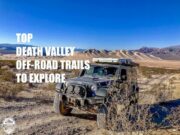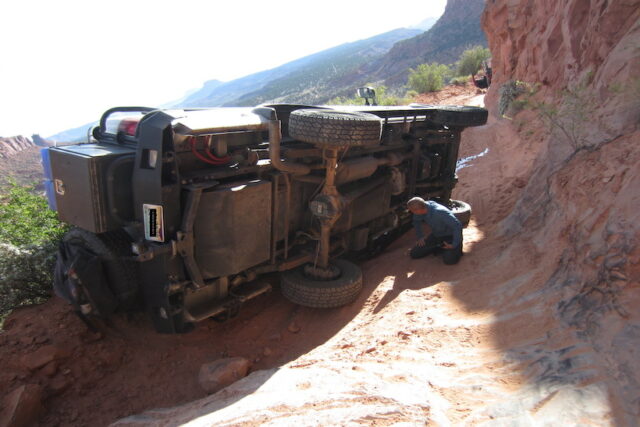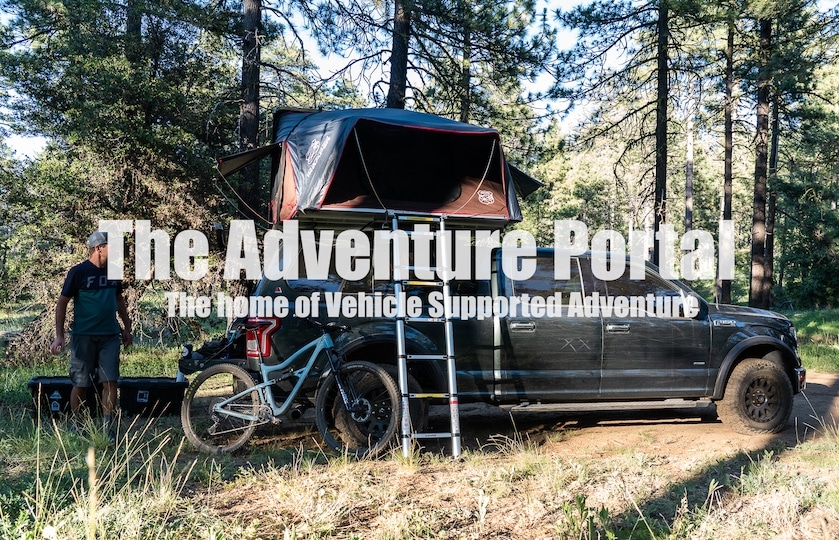TAP Editor’s Note: The following is part three and the final installment of this series on off-road recovery. The author, Bob Wohlers, teaches government, corporate, and recreational off-roading as a full time profession. He is one of only a handful of fulltime 4WD trainers in the USA. Some of the content in this multi-part series comes from Bob’s book The Total Approach to Getting Unstuck Off Road – 4WD Self-Recovery & Vehicle-Assisted Recovery. While other authors of 4WD books try to cover the topic of recovery in a single chapter, Bob has the only complete book on the topic – 352 pages of step-by-step information.
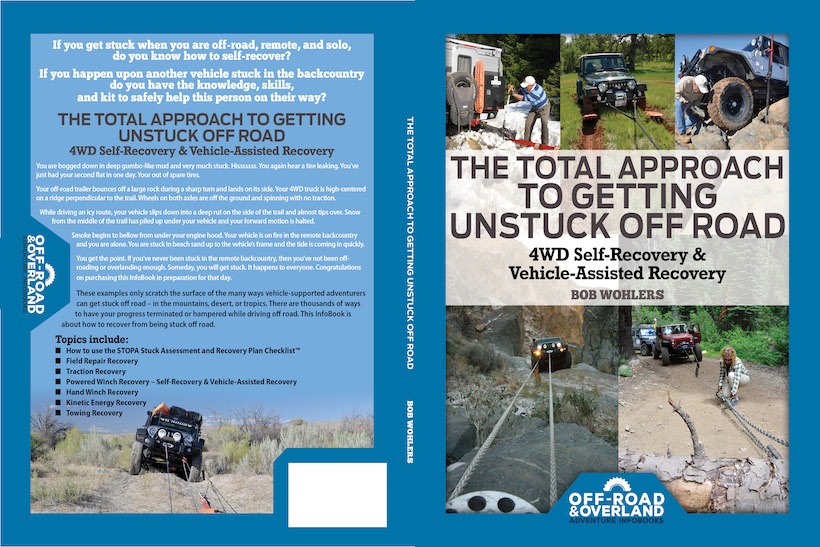
This book can be easily purchased on Amazon by clicking HERE. Bob also has two other 4WD specific books available on Amazon, each designed to help protect people, vehicles, and the environment: (1) Raising Your 4WD vehicle Off Road & In-Field Tire Repair (2) Live Long to Wander – Basic Survival for Vehicle-Supported Adventures To learn more about Bob Wohler, visit his website www.DiscoverOffRoading.com.
It’s More than “Brewing a Cup of Tea”
The STOPA Stuck Assessment and Recovery Plan Checklist™
I’ve attended several one and two-day off-road courses and more than my share of off-road recovery clinics at overland and off-road events. During many of these training sessions the trainer talked about “Brewing a cup of tea” once a vehicle gets stuck in the backcountry. This catchphrase refers to the concept of taking a PAUSE to think about a specific stuck or mishap situation, rather than haphazardly reacting wrongly to a bad occurrence. Incredibly, brewing a cup of tea is often the only procedural advice given to attendees at these recovery courses and clinics – if any advice is given at all.
I totally agree with the notion of taking a breather after getting stuck off-road. It is good advice. If brewing a cup of tea – or just stopping and having lunch – gets a stuck off-roader to slow down and carefully consider their situation and options prior to reacting to a difficult recovery situation, I’m all for it. However, in my opinion there’s more to it that simply brewing a cup of tea. A LOT MORE. This is especially true when the stuck situation is intense, like a vehicle tip over on a narrow and challenging trail.
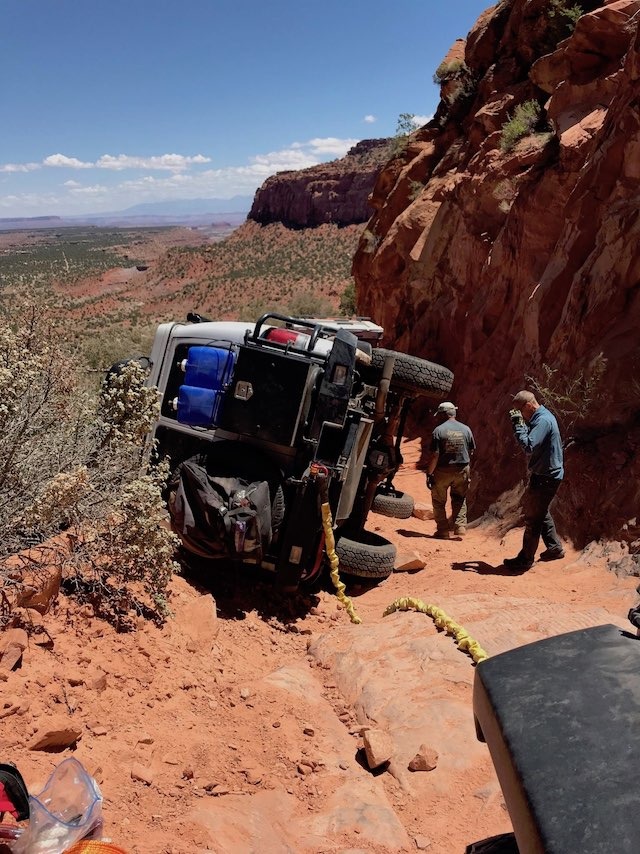
Even a less intense stuck situation can cause an inexperienced off-roader high anxiety when traveling alone in the remote backcountry. In both situations, adrenaline and anxiousness kicks in requiring MORE than a simple pause initiated by brewing a cup of tea. I’ve even seen drivers that get hopelessly stuck in the remote backcountry vomit as a result of their high anxiety. Arguments between partners can ensue when a vehicle gets stuck. “I told you not to go on that difficult trail!”
With adrenaline flowing and knees knocking, these off-roaders need a written step-by-step procedure to help them maturely assess their stuck situation and calmly develop a logical and safe recovery plan. It is my opinion that a written step-by-step recovery procedure needs to be in the glove box of every off-roader and overlander. Someone that’s stuck in the remote backcountry shouldn’t have to remember all the important recovery steps and considerations they need to make, in logical order, when the crap hits the fan. In an extreme recovery situation, even a seasoned off-roader may need a checklist to help guide their recovery efforts. Certainly, they need to do more to assess their situation than simply brewing a cup of tea.
Enter Off-Road Safety Academy’s STOPA Stuck Assessment and Recovery Plan Checklist™. STOPA is an acronym for Stop, Think, Observe, Plan, and then Act. After getting stuck, many off-roaders begin by ACTING – missing four very important steps.
I’ve never found in literature a well-formulated methodology to follow when someone gets stuck in the remote backcountry. I decided that off-roaders really need one – especially beginners. This is why I developed the STOPA Stuck Assessment and Recovery Plan Checklist™. One day, I assure you, you will need it.
The STOPA Stuck Assessment and Recovery Plan Checklist™ is included in my book: The Total Approach to Getting Unstuck Off Road – 4WD Self-Recovery and Vehicle Assisted Recovery. You may purchase my book from Amazon HERE.
Important Side Notes Regarding the STOPA Stuck Assessment and Recovery Plan Checklist™
- Developed Specifically for the Inexperienced. The checklist is developed for off-roaders that don’t have much, if any, actual winching or general recovery experience. As the developer of the checklist, I acknowledge that seasoned recovery veterans will work through the STOPA Checklist steps in their minds. In fact, inexperienced off-roaders won’t need a checklist either once they gain some recovery experience. It is for this reason I continually encourage readers to gain actual experience by taking a 4WD course from a professional trainer. Experienced off-roaders rarely do any math to estimate the loads put on recovery equipment and vehicles when attempting to get a vehicle unstuck. Experience allows them to mentally estimate the loads involved. When stuck, experienced off-roaders will simply: A) Audit the situation, B) Carefully rig a recovery setup, and C) Give it a try. In most cases, their experience will serve them well and they will get a vehicle unstuck in only one attempt. However, even the most experienced recovery professional will tell you that it took a few missteps and/or failures to arrive at their experience level. The STOPA Checklist can help off-roaders without much recovery experience avoid dangerous mistakes while gaining valuable recovery experience.
- The Primary Purpose of the STOPA Stuck Assessment and Recovery Plan Checklist™. The primary purpose of the checklist is to get those that haven’t performed many recoveries to simply think clearly about stuck situations in the remote backcountry. This is in sharp contrast to simply hooking up a winch or kinetic energy recovery rope or strap and start pulling on a stuck vehicle (like so many do). There are great forces at work with these types of recovery efforts. If these forces exceed the working load limit of recovery equipment and accessories, bad things can happen. Winches can begin to smoke or quit, shackles can deform or break, rope can fail, and straps can tear. How large are these forces? They are huge. For beginners, the word “huge” is ambiguous. As an educator, I feel compelled to provide beginners with real numbers – even though it’s an approximation. An actual load resistance number can exemplify and highlight the power of these forces to the uninitiated. To find an approximate resistance value, one only needs to do a very small amount of math on their smartphone.
- Approximate Resistance Values. There are many variables related to the nature of an actual stuck situation.
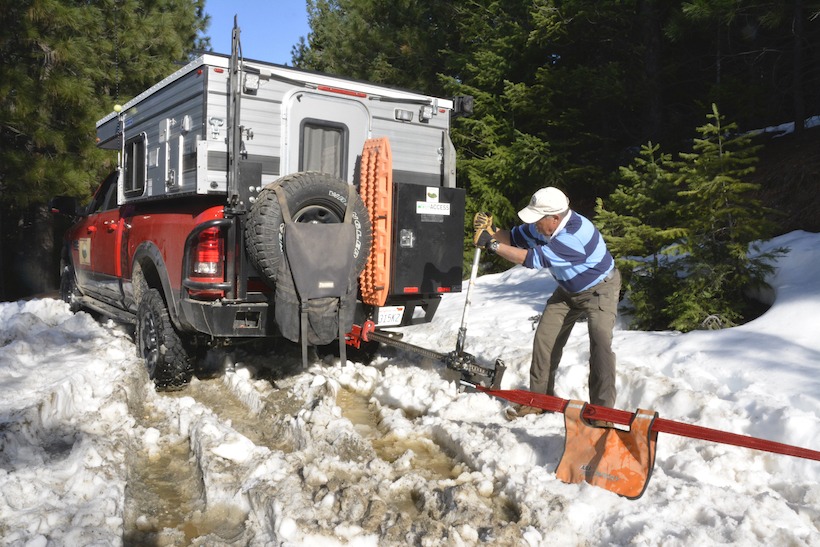
- As a specific example, mud in one geographical location will be different than mud somewhere else. Adding to this variability, are many types of mud one can get stuck in. These different characteristics and types of mud will provide different resistance values. Point is, in the natural world it’s all but impossible to accurately calculate resistance values for any one stuck situation. The only way to arrive at a precise resistance value for any singular recovery effort is to measure the pull with a dynamometer (a device using for such measurements, particularly in the hoisting industry). Short of using this device, any resistance value calculated is purely approximate. In my humble opinion, the calculation of approximate resistance values in the STOPA Checklist serve four important purposes. They:
- Can help the inexperienced off-roader understand the forces involved in practically all recovery efforts.
- Can help the inexperienced off-roader avoid recovery missteps and failures.
- Can help those that are nervous and running on adrenaline to focus on the recovery effort at hand. This will help them avoid exceeding the minimum tensile strength of recovery equipment and accessories.
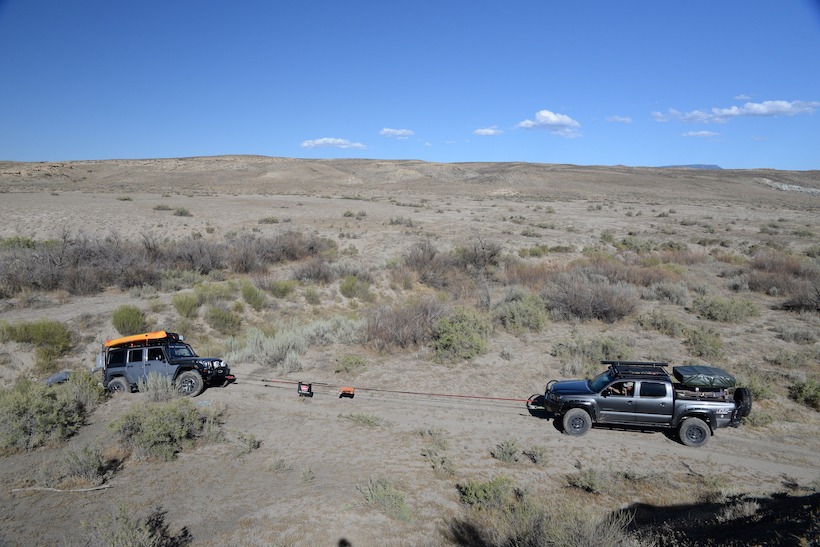
4. Are of teaching value for those beginning to learn the dynamics of recovery and stuck extraction.
- WreckMaster Resistance Numbers – The Best in the Industry. The resistance values in the Checklist come directly from WreckMaster, the preeminent North American tow truck training company. Their resistance values have been scientifically determined by quantitative methodology and validated by years of in-field experience.
- Begin Recovery Efforts with Low-Energy Strategies. Working through a thoughtful stuck assessment will help you decide on an initial recovery effort that is both safe and involves the lowest energy tactic with the highest probability of success. In many cases, you can extract yourself from the majority of off-road stuck situations by simply:
- Airing down your tires down further.
- Making sure you are in 4WD. Perhaps even 4-low for extra torque.
- Shoveling terrain away from around your tires and vehicle.
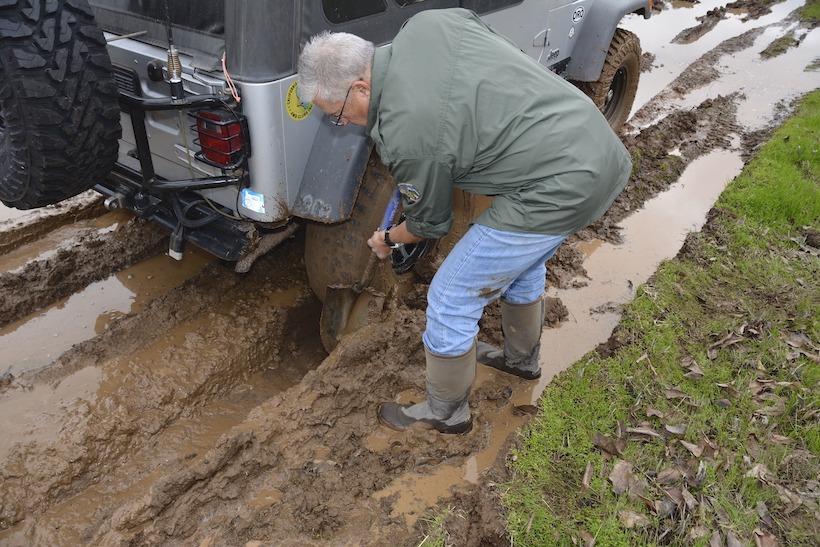
4. Building up terrain (such as stacking rocks in a deep hole).
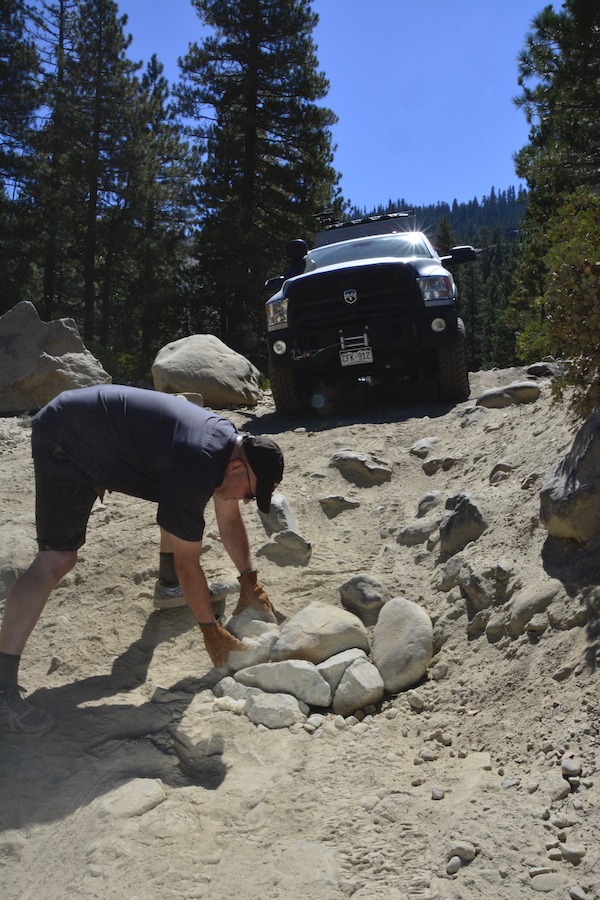
5. Using low-impact traction aiding devices such as electronic traction control, lockers, a sway-bar release, or traction boards (e.g., MAXTRAX or Crux Offroad Bridging Ladders).
There is so much more to the topic of 4WD off-road recovery than we can outline on The Adventure Portal. If you really want to help yourself and others when stuck in the remote backcountry, begin by developing your knowledge on the topic. Once you have this knowledge, practice, practice, and then practice some more. Practice skills the right way – use what we call “best practices” when trying out new procedures. My book, The Total Approach to Getting Unstuck Off Road, is in a step-by-step format with lots of photos. Yes, it’s best to take recovery training from a recovery professional (see the website DiscoverOffRoading.com for my upcoming courses). However, if no training is available near where you live, my book can be used to practice at your home or on a local trail. Go out and train with some of your off-roading friends. Make a day of it, and always practice with new recovery equipment prior to needing it in the field under actual circumstances. Use my book and the STOPA Stuck Assessment and Recovery Plan Checklist™ to guide your practice. It’s an honor to help you feel more comfortable in the remote backcountry when things go bad. Never stop preparing for the worst.
Check out Off-Road Recovery Part One HERE
Check out Off-Road Recovery Part TWO HERE
- Live Long to Wander: Basic Survival for Vehicle-Supported Adventures – $25.95 BUY HERE
- Raising Your 4WD Vehicle Off-Road & In-Field Tire Repair – $44.95 BUY HERE
- The Total Approach of Getting Unstuck Off Road – $59.95 BUY HERE
________________________________________________________





